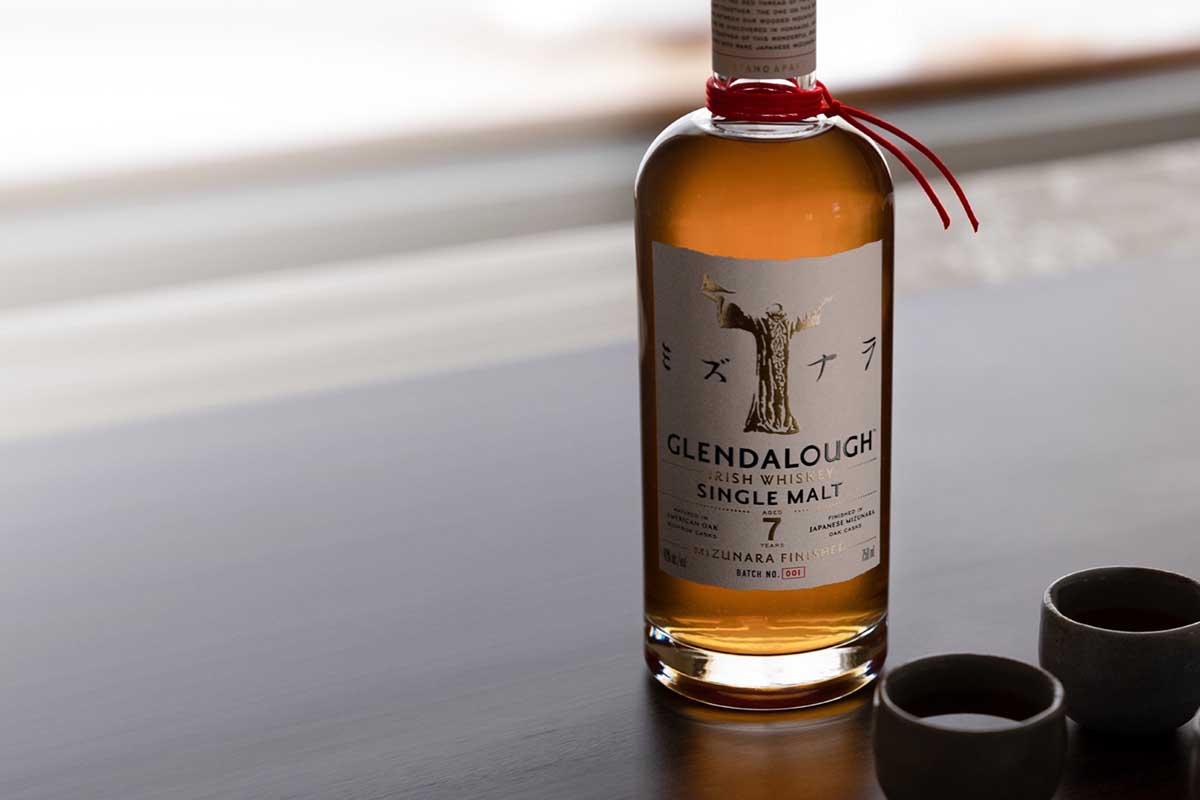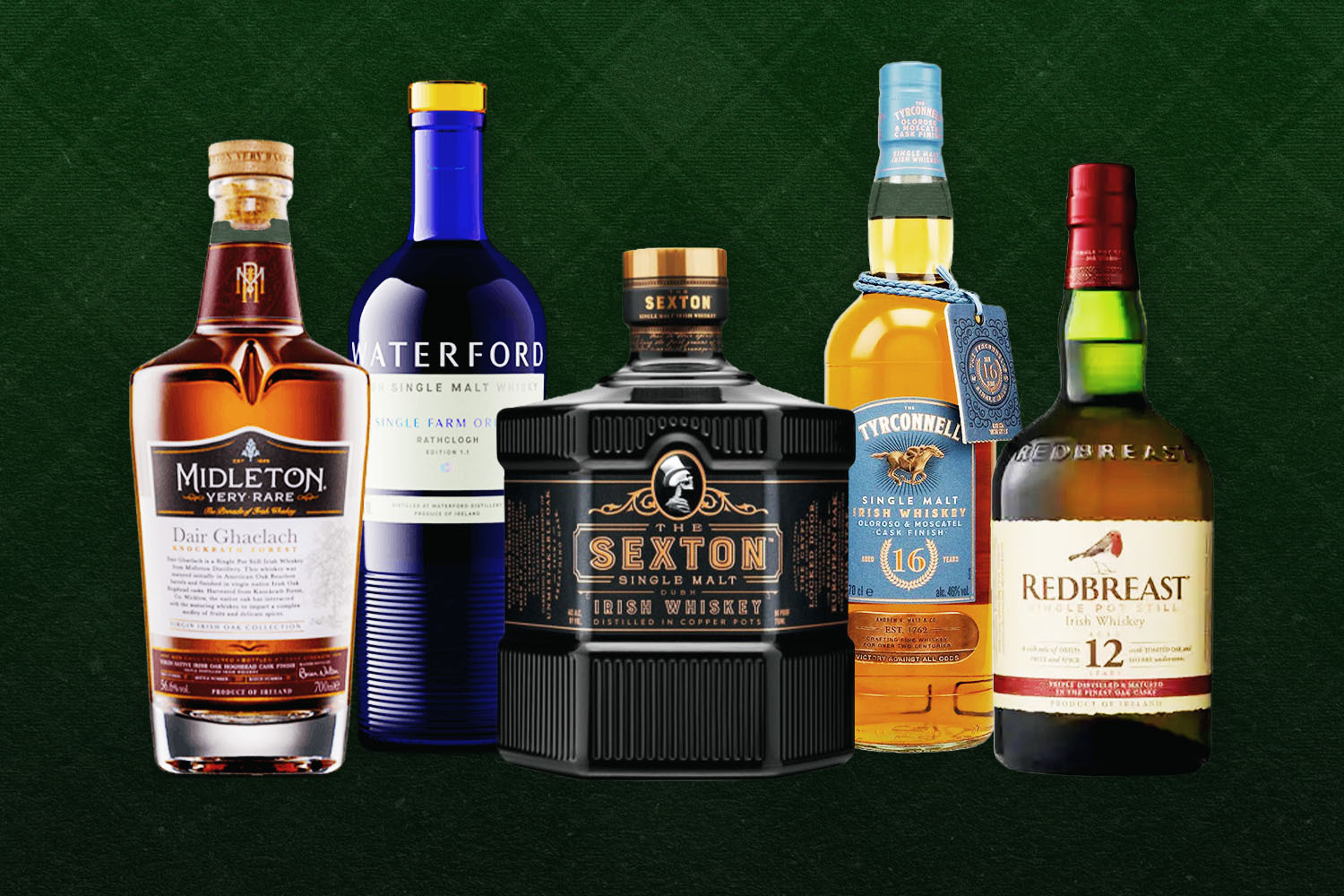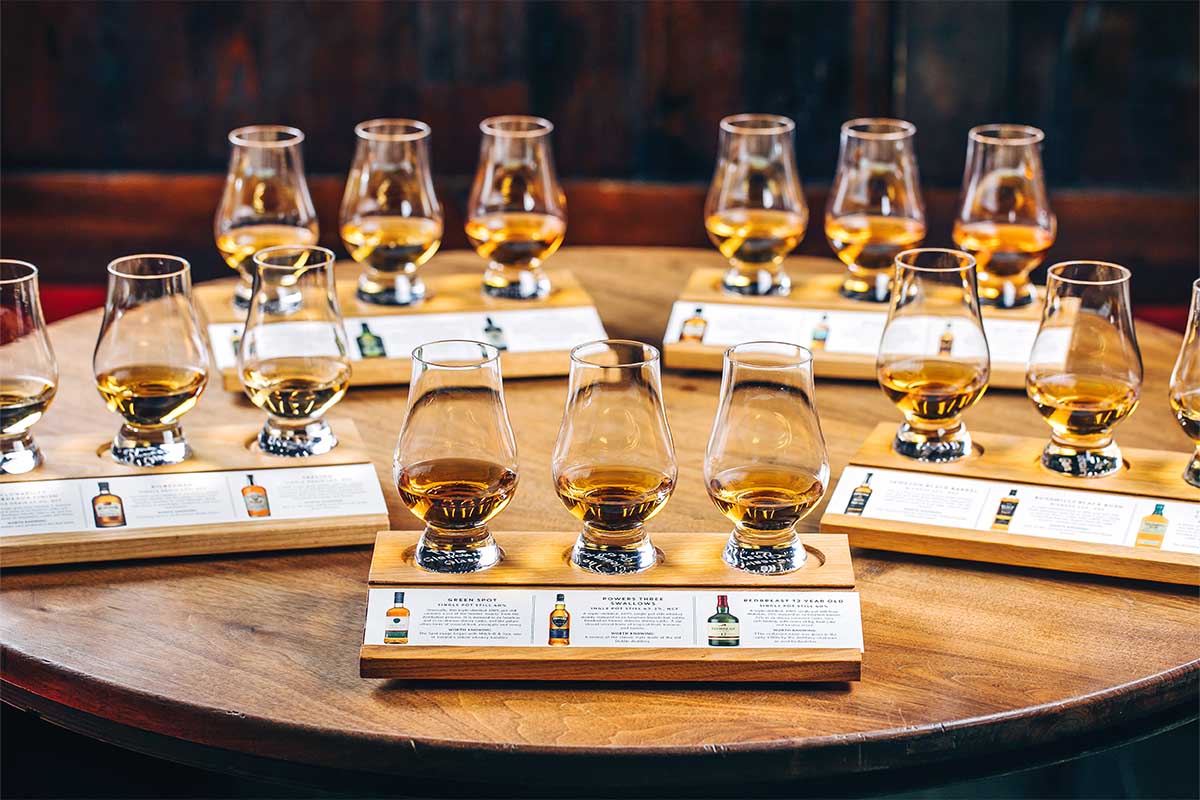What we’re drinking: Glendalough 7-Year-Old Single Malt Mizunara Cask
Where it’s from: This award-winning (Double Gold at the San Francisco World Spirits Competition) Irish whiskey brand is based an hour south of Dublin. Glendalough is known for its double-barrel program, which finds some of its hooch resting (or getting additional rest) in Irish oak, Oloroso sherry barrels and, now, Japanese Mizunara wood. This new 7-year follows a 13- and a 17-year release in those rare wood casks.
Why we’re drinking this: Besides loving the distillery — we thought their gin (featuring foraged botanicals near the distillery) was one of the best of 2020 — we were curious how an extremely rare and much sought-after wood could alter an Irish single malt (Glendalough says they’re the first Irish whiskey brand to have used Mizunara).
Problem? While Mizunara adds a lot of character, it’s extremely difficult to work with. “It’s soft and porous,” says Glendalough co-founder Donal O’Gallachoir. “It takes over 200 years to grow it doesn’t grow straight, and the staves are prone to leaking and cracking. No one should really make a cask from these, it’s the worst oak to work with.”
The wood takes three years to dry out, as well, and you have to waterproof the barrels by essentially painting them with a substance crafted from unripe persimmons. Oh, and the estimated cost per barrel is about $3,300, which was initially secured during a one-day blind auction against multiple whisky producers.
That said, the flavors and aromas this difficult wood add to a whiskey are profound, including a lot of exotic fruit and even incense qualities. And the distillery has built up enough of a relationship with a Japanese cooperage to ensure more of these Mizunara releases are forthcoming in the future. “From now on we’re going to have a portfolio of these single malts,” says marketing director/co-founder Gary McLoughlin, who also notes you’ll see different batches released twice a year.
How it tastes: The new release is a 7-year malt whiskey, triple distilled, that spends seven years in ex-bourbon casks, followed by four months in Mizunara (70% virgin casks, the rest having previously held the distillery’s 13- and 17-year Mizunara releases).
On the nose, I pick up dark fruits and floral notes, along with plenty of malt (the founders suggest notes of mango and pineapple, but I found it a bit more toward plums, raisins, etc.). On the palate, the traditional biscuity-y Irish whiskey picks up a nice bit of body — some would call it “chewy” — along and honey/toffee/fruit notes, followed by a long finish full of dark chocolate, sandalwood (that’s where the “incense” note is present) and cinnamon.
O’Gallachoir calls this a “chameleon” whiskey, and it does seem to change with each sip — the flavors here are unique to the Irish whiskey world, so your love of this will depend on how you feel about Mizunara, which does add a lot of complexity.
Fun fact: That red string on the bottle? That signifies “the red thread of fate,” a Japanese expression the Glendalough team heard when they discussed the potential collaboration.
Where to buy it: Mizunara is available now in extremely limited quantities at select retailers nationwide at SRP $99.99 for 750ml. You can use the distillery’s site to see if there’s a bottle nearby.
Every Thursday, our resident experts see to it that you’re up to date on the latest from the world of drinks. Trend reports, bottle reviews, cocktail recipes and more. Sign up for THE SPILL now.


















